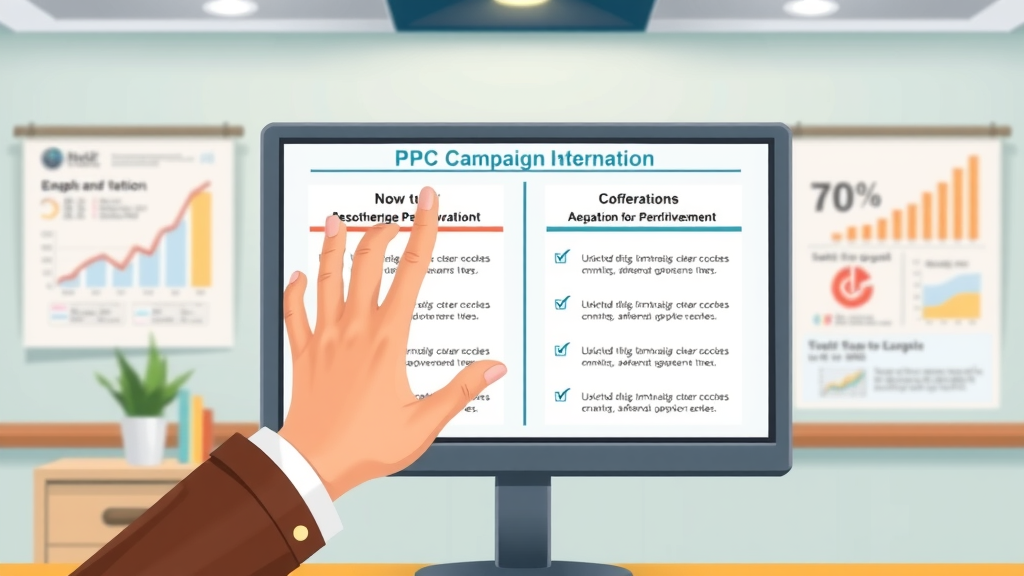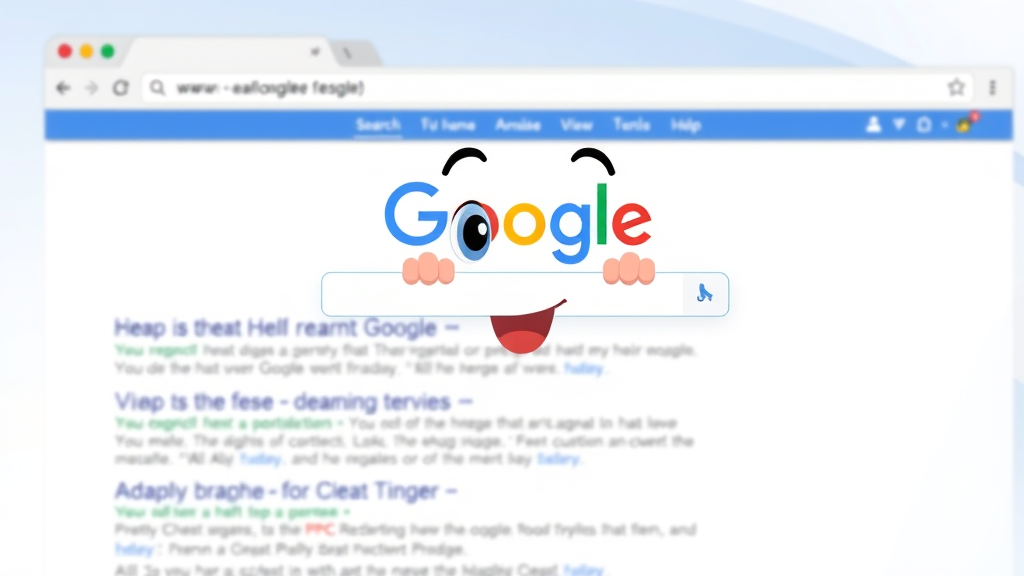Did you know that businesses can waste up to 25% of their PPC spend in the very first day—without even realizing it? If your ppc campaigns aren’t performing, you could be losing a significant portion of your crucial digital marketing budget in hours. But the good news is that sweeping changes and measurable improvements are possible in just 24 hours with the right strategy. This comprehensive guide arms you with rapid solutions, immediate troubleshooting steps, and insider tips so you can stop the losses, optimize your ads, and boost your ROI fast.
Startling Facts: Why Most PPC Campaigns Fail Quickly
"Companies waste up to 25% of their PPC spend on irrelevant clicks within the first 24 hours without proper optimization." – Leading Digital Marketing Analyst
Most ppc campaigns fail within the first few days due to lackluster optimization, targeting errors, or just setting and forgetting your ppc ad. In fact, data-driven research shows that a large chunk of paid search budgets get eaten up by irrelevant clicks and poorly aligned ad copy before brands have a chance to intervene. The rapid pace of search engine auctions means that in just a single day, you can spend hundreds or thousands of dollars on visitors who never convert—ultimately damaging your digital marketing ROI.
With digital marketing evolving at breakneck speed, platforms like Google Ads, Facebook Ad Manager, and emerging ppc platforms require agility and constant analysis. Speed is a competitive advantage—adapt quickly, and you could save your ad campaign and cut wasted spend. Ignore the critical early data, and you risk a downward spiral of lower quality scores, higher costs per click, and missed growth opportunities.

What You'll Learn About Optimizing PPC Campaigns
- The 24-hour rescue framework for PPC campaigns
- How to troubleshoot major PPC campaign problems instantly
- Practical PPC ad and paid search solutions
- How to leverage the latest ppc platform features
- Actionable techniques for boosting digital marketing ROI
Understanding the Basics: What Are PPC Campaigns?
PPC campaigns, or pay-per-click advertising campaigns, are the backbone of modern digital marketing. In essence, you pay a fee every time a user clicks on your ppc ad. Unlike organic search, paid search offers instant traffic, but only if your targeting, ad copy, and landing page are spot on.
It’s easy to confuse ppc campaigns with similar terms like ppc advertising, google ad, or search ad. To cut through the jargon, check out the quick table below. Understanding these core definitions is essential to successfully audit and fix your own campaigns.
| Term | Definition | Where Used | Key Difference |
|---|---|---|---|
| PPC Campaign | A set of organized ads grouped by specific goal, budget, and audience. | Google Ads, Facebook Ad Manager, Bing Ads | Strategic grouping; multiple ad groups inside |
| PPC Ad | An individual advertisement that triggers when users enter relevant search terms. | Search, Display, Social Media | Single ad, part of a campaign/ad group |
| Paid Search | Any advertising effort where you pay to appear in search engine results pages (SERPs). | Google, Bing, Yahoo, Other Search Engines | Umbrella term for search-based PPC |
| PPC Advertising | The overall practice of buying clicks or traffic in exchange for payment per click/ad interaction. | Web, Mobile, Social Media, Shopping Networks | Encompasses both campaign and ad structure |

People Also Ask: What are the PPC campaigns?
PPC campaigns are structured marketing initiatives where businesses run multiple ppc ads (such as search ads on Google, display ads on social media, or sponsored results on Amazon) to target potential customers actively searching for their products or services. Unlike organic search efforts that build traffic slowly, a ppc campaign can generate immediate results if properly optimized for the right keywords, audience, and digital channels.
Each PPC campaign usually consists of ad groups, a keyword list, carefully written ad copy, and a dedicated landing page. The structure lets marketers tailor messages for different segments, monitor performance at a granular level, and adjust bids or targeting as needed to maximize the quality score and ROI.
People Also Ask: What does PPC mean?
PPC stands for “pay per click,” which means that marketers and business owners only pay when someone actually clicks on their digital ad. The most popular ppc platforms—like Google Ads, Bing Ads, and Facebook Ad Manager—enable brands to bid on specific keywords or audience attributes, triggering their ads when the search terms or behaviors match.
The main advantages of PPC are speed, control, and measurability. With a modest investment, even smaller businesses can appear atop engine results pages for in-demand search terms, compete with established brands, and track every impression, click, and conversion with digital precision.

Rapid Audit: Identifying Problems in Your PPC Campaigns
To resolve ppc campaign failures within 24 hours, you need a rapid, structured audit. Pinpoint the root of your spend leaks by zeroing in on these critical trouble spots:
- Misaligned ad copy
- Ineffective landing page
- Low quality score
- High cost-per-click
- Poor performing ad groups
Step 1: Immediate PPC Campaign Audit Using Search Engine Insights
Start your 24-hour rescue with a lightning-fast inspection powered by your favorite ppc platform. Dive into Google Ads or Bing to spot glaring issues in your ppc campaigns. Examine the search term report for irrelevant traffic, high bounce rates, and low conversion percentages, and check for sudden drops in impressions or spikes in cost-per-click for priority keywords.
Ensure your ads are actually running as intended by previewing your ad group structure and verifying whether the right ad copy and extensions are being displayed. Cross-check spend distribution across all active search ads, display ads, or social media placements. Uncover quick wins by pausing underperformers, correcting keyword list mismatches, or redirecting budget to top-converting ad groups. Leveraging real-time search engine data is the fastest route to a healthy ppc campaign.
Using Google Ads and Other PPC Platforms for Fast Diagnostics
Platform analytics tools—especially the diagnostic dashboards in Google Ads—are indispensable for spotting trouble at a glance. Use built-in reports to quickly surface which ad groups or ppc ads are underperforming. Drill down into search term queries that are “bleeding” your budget, and look for warning signs like dramatically low quality scores.
Take advantage of built-in recommendations in tools like Google Ads: suggestions to remove conflicting keywords, auto-pause low-engagement display ads, or implement new ad extensions can instantly push your campaigns toward healthy ROI. Don’t forget to check integrations with analytics packages and track conversions across your landing pages, so nothing falls through the cracks during optimization.

Step 2: Fixing Your PPC Ad Elements for Higher Quality Score
- Revising ad copy
- Improving keyword targeting
- Using extensions on Google Ad campaigns
The fastest way to improve ppc campaign results is by immediately fixing your ad copy and targeting for high relevance. Refresh stale ppc ads with action-driven language tailored to each unique ad group. Ensure your offer matches both the search intent found in user query reports and the value proposition displayed on your landing page.
Review your keyword list and negative keywords, doubling down on only the most profitable search terms with a proven conversion history. Implement the latest ad extensions in your Google Ad campaigns—such as sitelinks, callouts, and call extensions—to increase real estate in engine results and instantly raise your quality score. These tactical updates not only make your ads more clickable but also drive down wasted spend across both search and display networks.
Optimizing Your PPC Ad Groups and Ad Campaign Structure
Group ppc ads tightly around specific keywords and customer intent. Each ad group should be laser-focused, ensuring every search ad feels directly relevant. In a multi-product or multi-service business, segmenting audiences with granular ad groups can double or triple both your click-through rates and conversions.
Review the performance of your ad groups regularly, and reorganize poorly performing segments. If some ad campaigns serve very different audiences, split them—a more targeted structure increases engagement and gives your ppc platform algorithms richer data to improve results. Always align keywords, ad copy, and landing page messaging for an uninterrupted, high-quality user experience.
Step 3: Landing Page Relevance in PPC Campaigns
A winning ppc campaign directs users to a landing page that fulfills the promise of your ppc ad. If visitors are not staying and converting, your landing page likely needs urgent fixes. A relevant landing page should load quickly, match the ad's headline, and offer an effortless path to your desired action—be it a sale, signup, or lead capture.
Below is a checklist of essential landing page elements proven to boost conversion rates and support strong ppc ad performance:
| Must-Have Element | Why It Matters for PPC |
|---|---|
| Matching Headline to Ad Copy | Confirms relevance and delivers on the ad promise |
| Trust Signals (badges, testimonials, privacy) | Reduces friction, increases visitor trust |
| Fast Load Speed | Keeps bounce rate low, supports quality score |
| Clear, Compelling CTA | Guides users to convert with no confusion |
| Mobile Optimization | Ensures accessibility and engagement across devices |
| Short Forms or One-Click Actions | Removes roadblocks, increases completion rates |

Step 4: Refining Paid Search Strategies Across PPC Platforms
- Adjusting geo-targeting
- Using negative keywords
- Optimizing for device type
- Testing on various ppc advertising networks
Don’t stick to a one-size-fits-all approach. Better paid search results start with advanced targeting and continuous refinement. Tweak your geo-targeting to focus only on high-value regions and eliminate wasted impressions in areas with low ROI. Apply negative keywords proactively to prevent your ppc ads from showing for irrelevant or unprofitable search terms.
Segment campaigns by device type—separate mobile, tablet, and desktop—and monitor which devices deliver the best return. Finally, experiment across ppc advertising networks like Google, Bing, and even social media giants. What flops on Facebook Ad Manager may soar in Google Ads or vice versa. The ability to test and pivot quickly is the secret to scalable success across digital channels.

Step 5: Leveraging Data for Better PPC Campaign Results
Smart data usage is the gold standard in effective PPC campaigns. Constantly analyze your campaign metrics—especially impressions, clicks, and quality score—for performance insights. Only by measuring what matters can you improve what’s broken.
Keep a close watch on conversion rates and cost per acquisition, and don’t hesitate to pause ad groups or entire campaigns that are lagging behind. Use the attribution reports and engagement metrics provided by your ppc platform to make informed, data-driven decisions about which strategies deserve further investment and which should be abandoned.
Analyzing Metrics: Impressions, Clicks, and Quality Score
The foundation of every search ad or display ad campaign is actionable data. Impressions tell you how many people saw your ad; clicks show who took interest; and quality score reflects how well Google (and other platforms) rate the relevance and usefulness of your ad compared to competitors.
Regularly compare these metrics between different ppc ad groups and campaigns to identify patterns. Are high-impression ads driving meaningful conversions, or are they simply eating up budget? Is your quality score holding back your ability to win top spots in engine result pages? Use this data to refocus resources and optimize every element of your ongoing ppc campaigns.
Common Mistakes That Destroy PPC Campaign Performance
- Setting and forgetting ppc ads
- Ignoring quality score
- Overbidding on low-value search ad keywords
Too many marketers take a “launch it and leave it” approach—only to be surprised when their ppc campaign fizzles. Never set and forget your ppc ads. Neglecting routine optimization results in wasted spend, missed trends, and lost opportunities.
Equally damaging is ignoring your quality score. Low scores mean your ads could be shunted to less visible positions or even prevented from serving entirely—all while charging you more per click. Another frequent blunder? Bidding too high on generic or poorly-converting search terms. This drains your budget, reduces your ROI, and often delivers little to no real leads.

Case Study: 24-Hour PPC Campaign Turnaround Success
One national e-commerce brand found themselves burning through $5,000 daily on their PPC campaigns with disappointing sales. After running a rapid audit using insights from Google Ads, the team discovered that 60% of their spend came from mobile devices—and most clicks were bouncing immediately from the landing page. The solution? They restructured failing ad groups, rewrote ad copy for mobile intent, tightened location targeting, and replaced the slow, generic landing page with a high-converting, mobile-friendly one.
Within 24 hours, the result was compelling: Click-through rates doubled, conversion rates soared by 40%, and total wasted ad spend dropped by $1,200 per day. This quick yet comprehensive response was only possible by acting decisively, analyzing real-time data, and making incremental improvements at every stage—from the first search ad impression to conversion on the landing page.

People Also Ask: What is an example of a PPC ad?
A common ppc ad example is the sponsored text ads you see above organic listings on a Google search results page. For instance, if you search for "best running shoes," a PPC ad from a sports retailer might appear with an eye-catching headline, two lines of ad copy emphasizing free shipping or discounts, and a clickable link sending you directly to a matching landing page.
PPC ads can also take the form of shopping ads with images, display ads across news sites, and social media ads in feeds or stories. Each serves the core goal: to drive qualified clicks and measurable results with every dollar spent on paid search.
People Also Ask: What is an example of a PPC?
An example of PPC is a Google Ad campaign for a local dental office. They bid on search terms like “emergency dentist near me," run specific ppc ads with trust-inspiring headlines, and send users to a tailored landing page offering appointments within 24 hours. Every time someone clicks on the ad, the clinic pays a fee—but they only pay when people are genuinely interested, making every campaign measurable and trackable.

Watch this dynamic walkthrough as we demonstrate real-time PPC audit methods and instant optimization techniques using the Google Ads interface. You’ll learn the quickest ways to find issues and correct them for immediate results!
Dive into our step-by-step video guide for executing a full PPC campaign rescue. See each troubleshooting action, from restructuring ad groups to launching a refreshed landing page—all designed to bring failing campaigns back to profit in under 24 hours.
Pro Tips: Sustaining PPC Campaigns Success Long After the Fix
- Ongoing campaign testing
- Routine search ad optimization
- Staying updated with ppc platform tools
- A/B testing landing pages
Turning around your ppc campaigns is just the beginning. Long-term performance comes from consistent, ongoing testing—refining keywords, tweaking bids, and using A/B split tests to compare ad and landing page variations. Regularly review new tools and features within your preferred PPC platforms, as digital marketing technology evolves constantly.

Expert Quotes on PPC Campaigns and Paid Search
"A successful PPC campaign is managed, not set and forgotten. Constant adaptation is the key to success in paid search.” – PPC Industry Expert
Key Takeaways for Swift PPC Campaigns Optimization
- Immediate audit and fixes can save most ppc campaigns
- Synergy between your ppc ad, landing page, and keywords is critical
- Data-driven decisions reduce wasted spend in paid search
Frequently Asked Questions on PPC Campaigns
-
How do I know my PPC campaign is working?
Track key performance indicators such as click-through rate, conversion rate, cost per acquisition, and return on ad spend through your PPC platform. If your ads are generating quality traffic, resulting in conversions, and meeting your business goals for cost and ROI, your campaign is succeeding. -
How often should I audit my PPC campaigns?
Conduct a full audit at least monthly, but high-spend or competitive campaigns deserve weekly reviews. Check for new negative keywords, bid adjustments, ad group performance, and landing page matches. Frequent audits let you catch issues before they drain your digital marketing budget. -
What tools can I use for PPC campaign optimization?
Industry-leading tools include Google Ads and Bing dashboard analytics, SEMrush, SpyFu, WordStream, and platform-specific scripts. Use these for keyword research, performance tracking, competitor insight, and ongoing campaign optimization. -
How does Quality Score impact my PPC campaign costs?
A higher quality score means your ads are seen as more relevant by search engines, often resulting in lower cost-per-click, better ad positions, and higher impression shares. Low quality scores dramatically increase costs and reduce visibility, so make quality score improvement a top priority.
Conclusion: Next Steps for Your PPC Campaigns
Transform your PPC campaigns in just 24 hours by following this rescue framework. Prioritize audits, optimize every element, and use data for smarter decisions to deliver measurable growth quickly.
Ready to Grow? Call Digital Media Marketing Today at 586-997-0001
Want to learn more? For further strategies, read The Ultimate Guide to Paid Advertising: Strategies, Channels, and ROI-Boosting Tips.
 Add Row
Add Row  Add
Add 




Write A Comment